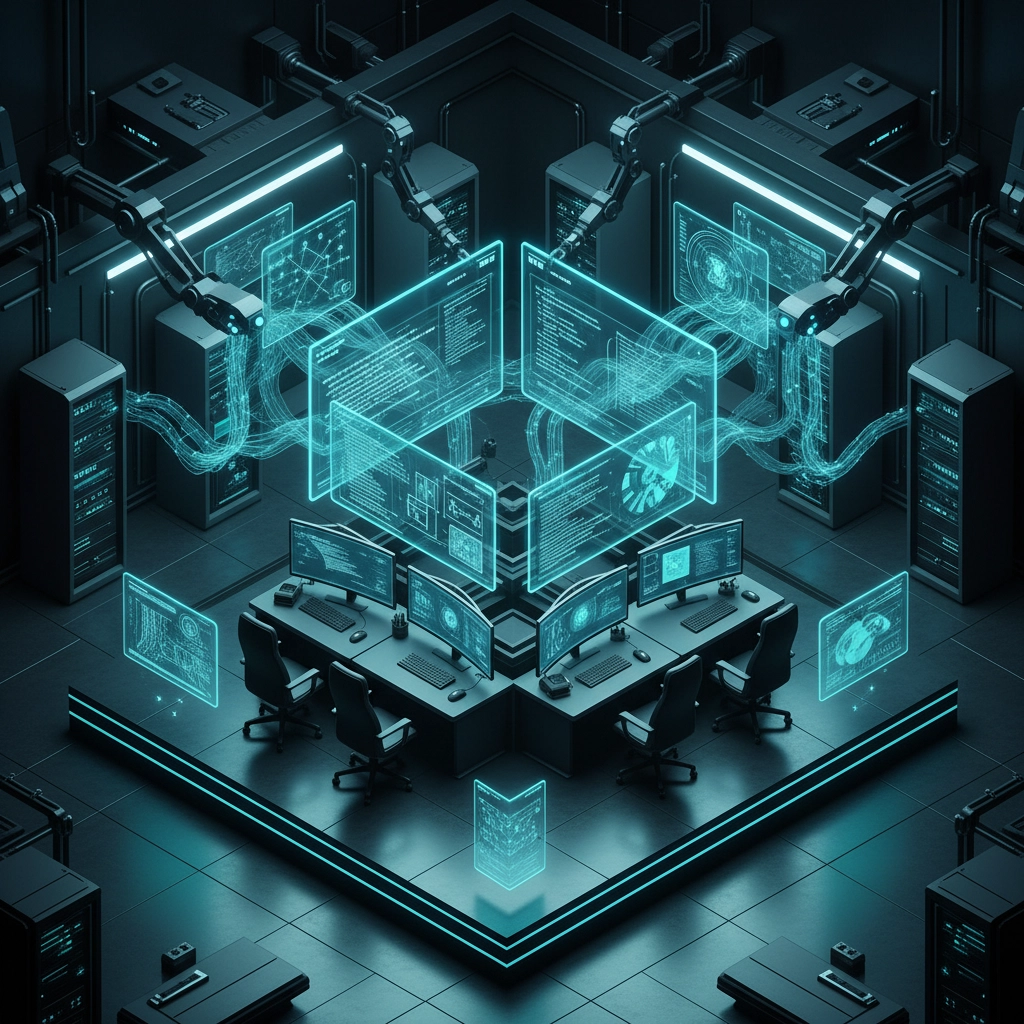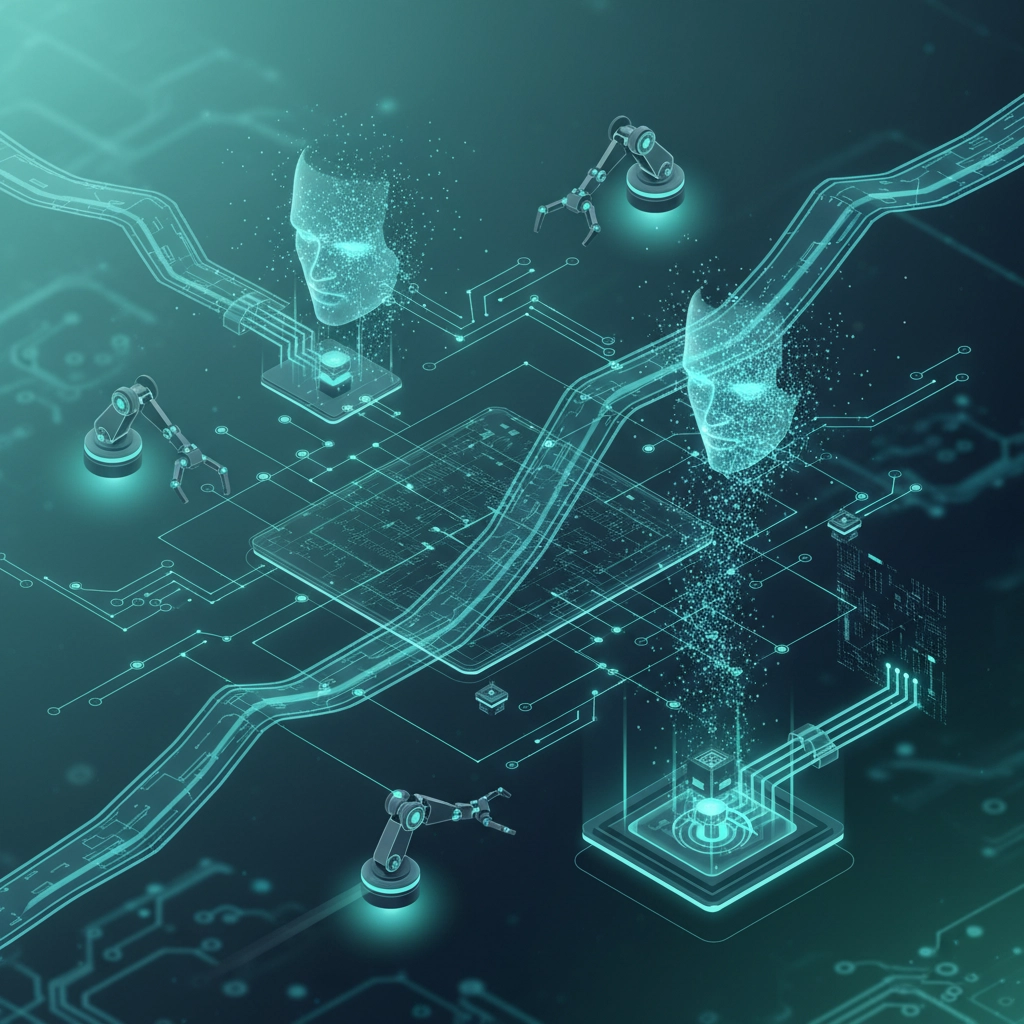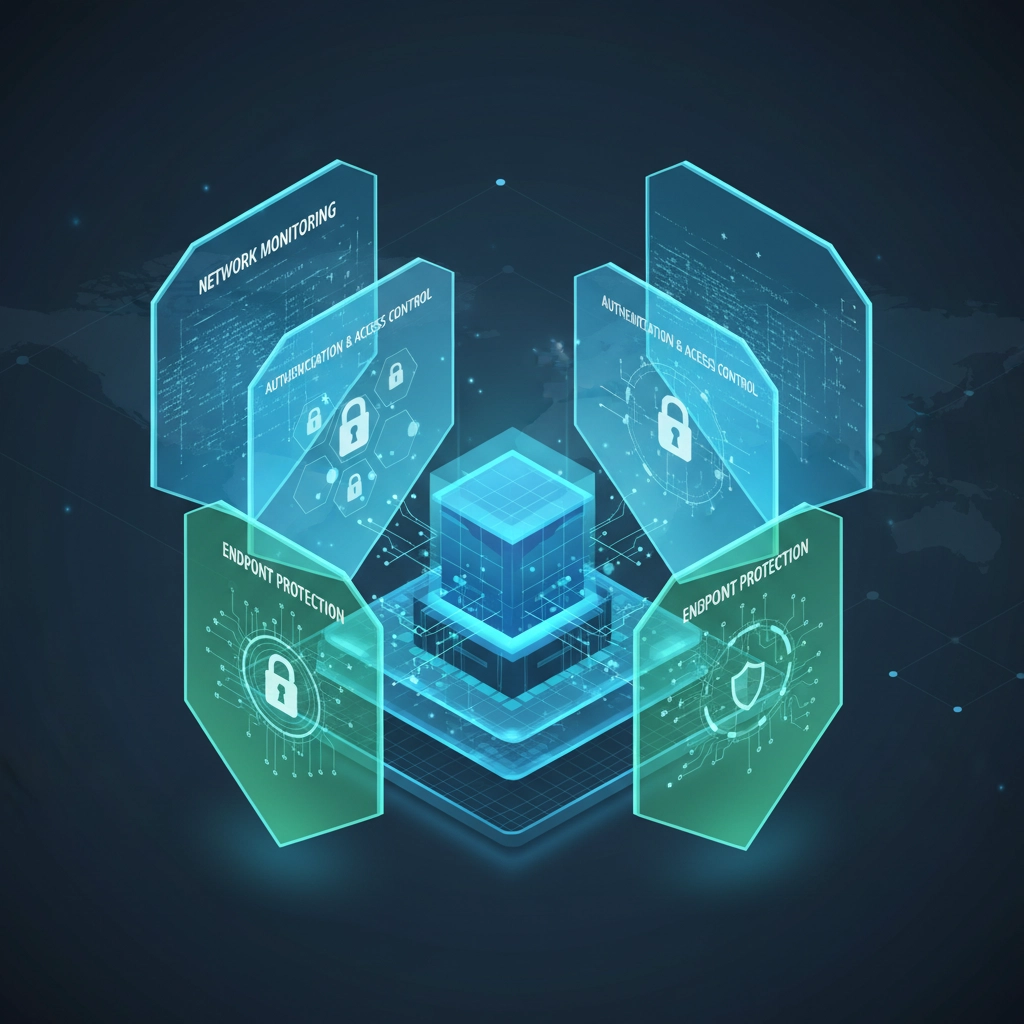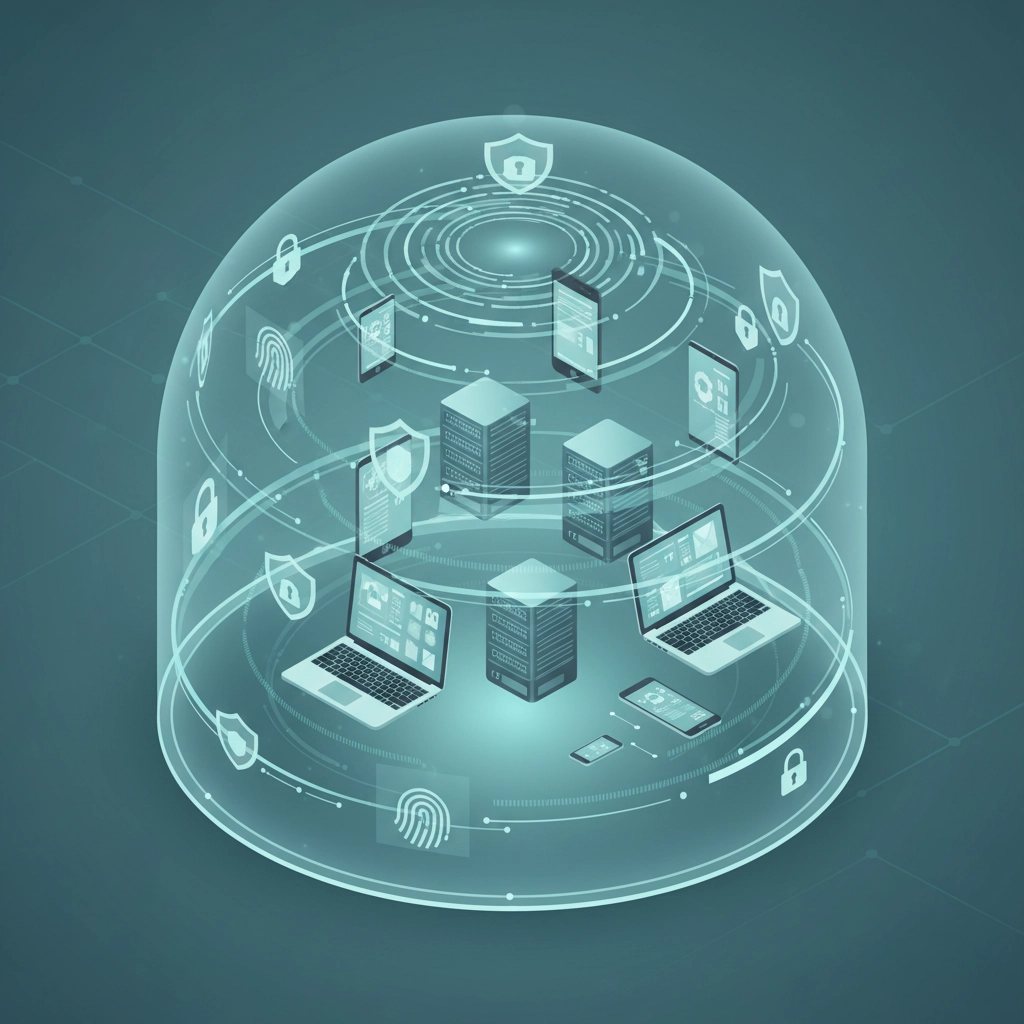If you're still relying on just antivirus software to protect your business in 2025, you're essentially using a bicycle lock to secure a bank vault. It's not that antivirus is bad: it's just that cybercriminals have completely changed the game while many business owners are still playing by 2010 rules.
Here's the uncomfortable truth: 45% of organizations now rank ransomware as their top cyber risk, and traditional antivirus software can't stop most of today's attacks. The threats that keep cybersecurity experts awake at night aren't the viruses your antivirus was designed to catch: they're sophisticated, AI-powered attacks that slip right past traditional defenses like they're not even there.
How Cyber Threats Evolved While You Weren't Looking
Remember when computer viruses came on floppy disks and the biggest worry was accidentally downloading something sketchy? Those days are long gone. Today's cybercriminals are running sophisticated operations that would make Fortune 500 companies jealous.
Modern attackers aren't trying to break down your digital front door: they're walking in through the side entrance, often invited in by your own employees who don't realize they're being manipulated. Phishing attacks, business email compromise, and social engineering now make up the majority of successful breaches, and your antivirus software is about as effective against these as a screen door in a hurricane.

Fileless malware represents one of the biggest shifts in the threat landscape. These attacks operate entirely in your computer's memory, never creating the files that antivirus software needs to detect threats. It's like having a burglar who never leaves fingerprints because they never actually touch anything.
Then there are zero-day exploits: attacks that target vulnerabilities that nobody knew existed. Your antivirus can only protect against threats it knows about, but zero-day attacks are, by definition, completely unknown until after the damage is done.
What Your Antivirus Can (and Can't) Do
Let's be fair to antivirus software: it's still good at what it was designed to do. If someone tries to infect your computer with a known virus or malware that's already been catalogued, your antivirus will probably catch it. It's like having a bouncer who knows all the troublemakers from the neighborhood.
But here's where it falls short:
Can't stop social engineering attacks where criminals trick your employees into giving away passwords or sensitive information. Your antivirus doesn't know the difference between a legitimate email from your bank and a convincing fake.
Can't detect behavioral anomalies that might indicate a breach. If someone gains legitimate access to your systems and starts copying files, antivirus won't flag this as suspicious behavior.
Can't protect against supply chain attacks where criminals compromise software you trust and use it to access your systems.
Can't stop credential-based attacks where criminals use stolen or weak passwords to access your accounts legitimately.
The New Threat Landscape: AI-Powered and Human-Targeted
Artificial intelligence has become the criminal's best friend. AI-powered cyber attacks can now automate the process of finding vulnerabilities, crafting convincing phishing emails, and even adapting their tactics in real-time based on your defenses.
Deepfake technology has exploded, with the number of deepfakes online increasing by 550% from 2019 to 2023. Criminals are using AI to create convincing fake video calls from CEOs requesting wire transfers or fake audio recordings of trusted colleagues asking for sensitive information.

Business Email Compromise (BEC) has become incredibly sophisticated. Criminals spend weeks researching your company, learning your communication style, and timing their attacks perfectly. They're not sending obvious "Nigerian prince" scams anymore: they're crafting emails so convincing that even careful employees fall for them.
Ransomware-as-a-Service has democratized cybercrime. You don't need to be a technical genius to launch a ransomware attack anymore: you can literally rent the tools and services from other criminals. It's like Uber, but for destroying businesses.
What Real Security Looks Like in 2025
Comprehensive cybersecurity in 2025 isn't about having one super-powered tool: it's about creating multiple layers of protection that work together. Think of it like securing your home: you don't just rely on a front door lock. You have locks, an alarm system, motion sensors, cameras, and maybe even a dog.
Endpoint Detection and Response (EDR) is like having a security guard who actually watches what's happening instead of just checking IDs at the door. EDR monitors behavior patterns across all your devices, looking for signs that something suspicious is happening: even if it's not a known threat.
Multi-Factor Authentication (MFA) adds an extra lock to every door. Even if criminals steal your passwords, they still can't get in without the second factor: usually something on your phone or a security key.

Advanced Email Filtering goes beyond basic spam detection. Modern email security uses machine learning to identify sophisticated phishing attempts, Business Email Compromise attacks, and other threats that traditional filters miss.
Network Security and Monitoring keeps watch over all the data flowing through your systems. It can spot unusual patterns that might indicate someone is sneaking around where they shouldn't be.
Security Awareness Training addresses the biggest vulnerability: your employees. Regular training helps your team recognize and respond appropriately to social engineering attempts and phishing emails. Our recent article on social engineering defense covers some innovative approaches to this challenge.
Zero Trust: The New Security Philosophy
The old security model was "trust but verify." The new model is "never trust, always verify." Zero Trust security assumes that threats could be anywhere: inside or outside your network: and requires verification for every access request.
Our detailed comparison of Zero Trust vs. traditional security explains how this approach can dramatically improve your security posture by limiting how far attackers can move through your network once they gain initial access.
Practical Steps for Small and Medium Businesses
You don't need to break the bank to implement real security. Here's how to upgrade from antivirus-only protection:
Start with the fundamentals: Implement MFA on all critical systems, ensure all software is regularly updated, and establish a robust backup strategy that includes offline backups.
Invest in integrated solutions: Instead of piecing together multiple tools, look for comprehensive security platforms that include EDR, email security, and network monitoring in one package.
Don't forget compliance: If you handle sensitive data or operate in a regulated industry, antivirus alone won't meet compliance requirements for frameworks like HIPAA, PCI-DSS, or SOX.

Plan for incidents: No security is perfect, so have an incident response plan ready. Know who to call, how to communicate with stakeholders, and how to recover operations quickly.
Regular security assessments: Schedule quarterly reviews of your security posture to identify gaps and ensure your protections keep pace with evolving threats.
The Bottom Line: Security Is Business Insurance
Think of comprehensive cybersecurity like insurance for your business operations. You wouldn't insure a $2 million building with a $50,000 policy, so why protect your entire business with just antivirus?
The cost of a security breach extends far beyond just fixing the immediate problem. Downtime translates directly to lost revenue, reputation damage can last for years, and regulatory fines can be devastating for smaller businesses.
In 2025, cybersecurity isn't just an IT issue: it's a business continuity issue. The question isn't whether you can afford to implement comprehensive security; it's whether you can afford not to.
Ready to Move Beyond Antivirus?
If you're ready to upgrade your business security from 2010 to 2025, we're here to help. At B&R Computers, we specialize in helping small and medium businesses implement comprehensive, affordable security solutions that actually work against today's threats.
Don't wait for a breach to wake you up to the reality of modern cybersecurity. Contact us today for a free security assessment and learn how we can help you build real protection for your business. Because in 2025, "good enough" security just isn't good enough anymore.




































































































